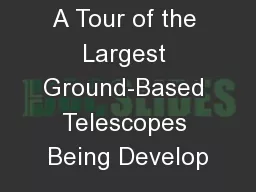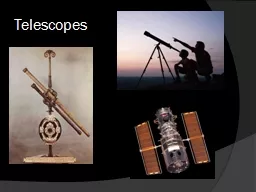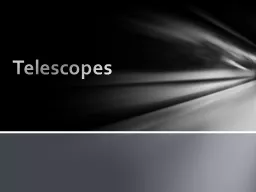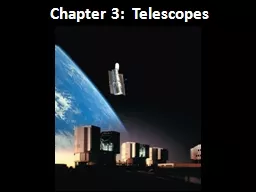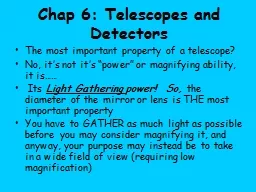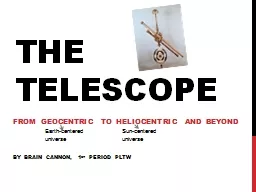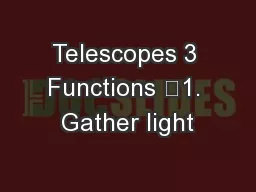PPT-A Tour of the Largest Ground-Based Telescopes Being Develop
Author : tatyana-admore | Published Date : 2017-07-01
Big Glass Giant Magellan Telescope GMT Las Campanas Chile First Light 2024 Large Binocular Telescope LBTO Mt Graham AZ 2007 Large Synoptic Survey Telescope LSST
Presentation Embed Code
Download Presentation
Download Presentation The PPT/PDF document "A Tour of the Largest Ground-Based Teles..." is the property of its rightful owner. Permission is granted to download and print the materials on this website for personal, non-commercial use only, and to display it on your personal computer provided you do not modify the materials and that you retain all copyright notices contained in the materials. By downloading content from our website, you accept the terms of this agreement.
A Tour of the Largest Ground-Based Telescopes Being Develop: Transcript
Download Rules Of Document
"A Tour of the Largest Ground-Based Telescopes Being Develop"The content belongs to its owner. You may download and print it for personal use, without modification, and keep all copyright notices. By downloading, you agree to these terms.
Related Documents

